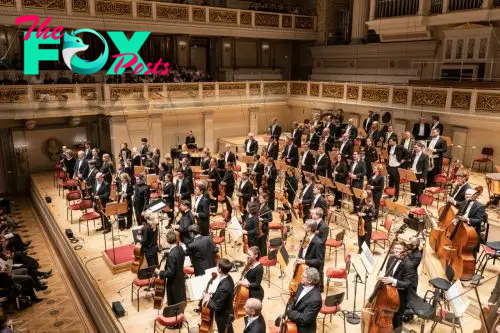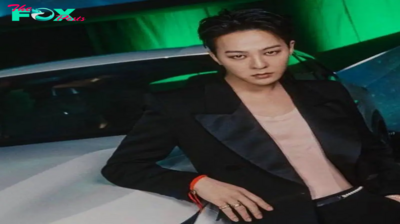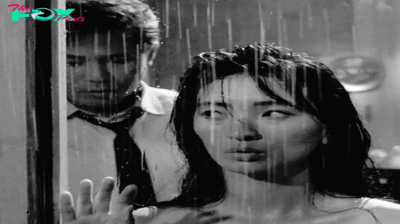Entertainment
Pause for thought in addition to enjoyment in Berlin from RSB’s Mendelssohn and Stravinsky – Seen and Heard Worldwide
 Germany Mendelssohn and Stravinsky: Denis Uzun (mezzo-soprano), Berlin Radio Refrain (refrain director: Philipp Ahmann), Berlin Radio Symphony Orchestra / Martyn Brabbins (conductor). Konzerthaus Berlin, 16.3.2024. (MB)
Germany Mendelssohn and Stravinsky: Denis Uzun (mezzo-soprano), Berlin Radio Refrain (refrain director: Philipp Ahmann), Berlin Radio Symphony Orchestra / Martyn Brabbins (conductor). Konzerthaus Berlin, 16.3.2024. (MB)

Mendelssohn – Symphony No.4 in A serious, op.90, ‘Italian’; Hymne, Op.96
Stravinsky – Symphonies of Wind Devices; Symphony of Psalms
Mendelssohn and Stravinsky may not appear the obvious bedfellows, however this Berlin Radio Symphony (RSB) live performance, initially deliberate with Sir Andrew Davis however performed by Martyn Brabbins, supplied pause for thought in addition to enjoyment. Each composers had fraught relationships both with Wagner or his music — and, by extension, with that pressure of musical Romanticism. (Even Liszt, that the majority beneficiant spirited of composers, may refer dismissively to the ‘opposition’ as ‘leipzigerisch’.) The character of their (neo)classicism is way from the identical, however it provides an attention-grabbing perspective, even when the music carried out isn’t so markedly in that mould. One may definitely spill a great deal of ink in discussing the connection of the 2 Stravinsky works right here to concepts and apply of neoclassicism. That, you’ll probably be relieved to know, should await one other day, however such preliminary ideas supplied a body by way of which to listen to the works involved.
The RSB performed Mendlessohn’s Italian Symphony with irresistible élan, string sheen and sunny woodwind a delight all through. Brabbins was certainly on the quick facet for Allegro vivace, however many conductors are. All through, he imparted a correct sense of improvement to Mendelssohn’s writing, nowhere extra so than within the featherlight counterpoint of the event part correct, although that definitely continued within the recapitulation. There was Abruzzo-like warmth too in a studying stuffed with color and incident, aptly foreshadowing the processional of the second motion, which equally benefited from clear textures and a eager sense of path. A swish minuet, replete with trio that went correctly past it in a couple of path, led to a saltarello each disciplined and wild, its contagion as spectacular as its chiaroscuro.
The Op.96 Hymne, ‘Three Non secular Songs’ (as they’re identified within the model with organ) plus a concluding Fuga, acquired a profitable efficiency, mezzo Deniz Uzun and the Berlin Radio Refrain becoming a member of Brabbins and the orchestra. Telling element could possibly be heard with out exaggeration, selection in scoring (the opening of the second, an particularly pretty ‘hymn’, setting solo voice in opposition to woodwind consort) registering in each case. A energetic third, with rising sense of jubilation, revealed as soon as once more what a superb refrain that is: ultimate in weight, steadiness, and readability. A lot the identical could possibly be stated of the concluding fugue.
Stravinsky’s Symphonies of Wind Devices sounded as seductive and rebarbative as ever, an ideal objet trouvé that discover itself one way or the other chiselled to nonetheless additional perfection. Apparently ossified strains suggestive of The Ceremony of Spring had been imbued with radically new life, the efficiency as a complete splendidly alive: a liturgy in itself, to which we had been permitted viewers if not participation. If Boulez was a really perfect interpreter (celebrant?) of this hieratic music, I couldn’t assist however suppose Stockhausen should have liked it too. At any fee, it made for a splendid introit to the Symphony of Psalms, whose related strangeness registered visually in orchestral structure (famously, no violins and violas, nor clarinets) earlier than a word had been heard.
It proved one other labyrinth, as stuffed with incident in its means, above all within the first motion, as Mendelssohn’s symphony. Superb choral sound was nicely complemented by the orchestra; if there have been events when the 2 threatened to go their separate methods, it by no means fairly occurred. Extra to the purpose, the inscrutability of Stravinsky’s musical units – completely attribute ostinato within the first motion, the double fugue of the second – proved as soon as once more to move all ‘expressive’ understanding, the composer’s ever-surprising ear made musically manifest. What a wierd ‘response’ to the textual content Stravinsky provides within the phrases from Psalm 150 within the third motion. He would probably have stated he was not responding in any respect, however merely setting them. That may readily change into play with phrases, for ‘expression’ right here, if hardly Romantic, was no much less highly effective for being what it was: fairly the opposite. Brabbins took the opening daringly gradual, offering all of the higher distinction with what was to come back. Music seeming at instances to circle the worlds of the Symphony in Three Actions and even the Circus Polka by no means appeared remotely incongruous; roots and essence led to a hypnotic, even sanctified shut.
Mark Berry
-

 Entertainment2h ago
Entertainment2h agoA Look at the Dating History and Rumoured Relationships of BIGBANG Star G-Dragon
-

 Entertainment10h ago
Entertainment10h agoMike and Lauren Sorrentino Introduce Baby No. 3 to Kids in ‘Jersey Shore’ Exclusive Clip
-

 Entertainment13h ago
Entertainment13h agoNatasha Rothwell on Her Memorable Firsts
-

 Entertainment19h ago
Entertainment19h agoFace Me and Other Korean Medical Crime Shows That are Must Watch
-

 Entertainment1d ago
Entertainment1d agoClassic Korean Movies Like Piagol to Add to Your Watch List
-

 Entertainment1d ago
Entertainment1d agoOver 60 Million People Tuned in to Watch Jake Paul vs. Mike Tyson
-

 Entertainment1d ago
Entertainment1d agoPopular Hudson Valley Italian Restaurant Addresses Closing Rumors
-

 Entertainment1d ago
Entertainment1d agoRHOBH’s Dorit Kemsley Addresses Viral Smoking Scene on Season 14 Premiere: ‘I Was Being Chased’



















